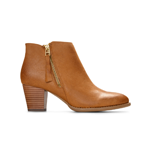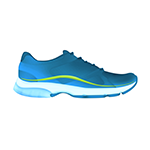
What are Good Shoes for Walking?
What Are Good Shoes for Walking?
By Dr. Jackie Sutera
Walking may be one of the simplest things you can do to increase your activity level and improve your overall health—and picking the best walking shoe is very important. While it may make sense for some people to wear running shoes for walking, it’s not ideal. There is “activity-specific” technology that goes into most athletic shoes. The exception is technically in the “grey area” because both running and walking are forward motions. Your overall fit, preference, and comfort are what’s most important, and that varies from person to person. Some people have flat feet, wide feet, or a high arch. So, if you have found that walking in running shoes works for you, take necessary precautions to avoid injury (but we would never recommend the reverse- running in walking shoes is never recommended!) Whatever shoe you decide to walk in, monitor how you feel throughout your walk. Arch support, insoles, or even orthotics can be added to walking or running shoes that can help prevent and treat arch and foot pain.
It is also recommended to get a new pair of walking shoes every 300-400 miles or every four to six months. Alternatively, another way to check shoes is to do the “tabletop test.” Place your shoes on a tabletop at eye level and look for signs of asymmetry or holes. Also, don’t forget to flip them over to examine the heel and soles for signs of wear and tear. After so many miles of walking, wear and tear will develop, and they must be replaced, just like tires on your car!
A walker’s needs are different from a runner’s needs, and that’s why it is essential to note the major differences and designs between walking and running shoes. They mostly differ in weight, cushioning, and flexibility.
Shoe weight
The weight of a shoe directly impacts the wearer’s speed. Running shoes are typically more lightweight shoes to aid in faster gait patterns and movements while walking shoes are usually heavier. This is also true for hiking boots. A slightly heavier shoe is to maintain stability for a slower, consistent, and steadier pace of walking, or hiking.
Flexibility
Both runners and walkers need sneakers with flexibility, allowing the shoes to move with the foot. The location is different, however. Most running shoes have increased midfoot or arch flexibility, which supports shock absorption from the constant strike. Walkers need good arch flexibility since they use their toes to push off. Without this flexibility in the arch, walkers risk straining their feet and developing plantar fascitis, among many other potential injuries.
Cushioning
Cushioning is an essential design quality to consider when choosing between a running or walking shoe. Both walkers and runners need comfortable shoes during their activity. For most walkers, a stability shoe with foot support is most important over an extended time, while runners prioritize impact-force protection because of the continuously striking your feet on the surface.
FAQS
What makes the ideal pair of comfortable walking shoes, and why?
Ideal, comfortable walking shoes provide cushion, stability, support, and shock absorption, whether you’re going out for a quick stroll or a relaxing, long walk. Vionic’s current walking shoes styles have 3 zone comfort technologies built-in, including a deep-seated heel cup, contoured arch, and cushion.
What are a few things I should keep in mind while shopping for comfortable walking shoes?
To find the best shoe for you, look for styles that have a “heel to toe drop” where the back of the shoe is thicker than the front. Avoid platform and flat sneakers for walking.
What’s the ideal insole material for walking shoes?
The ideal insole material should be firm enough so that when you step down on the arch, it supports the foot and doesn’t allow the arch and midsole cushioning to collapse. Materials such as foam and gel may be too soft, and won’t give you enough support when walking long distances. Insoles work best when they match the contours of your feet.
Recommendations for good walking shoes
What kind of harmful effects can the wrong walking shoes have on your feet?
Maladies that occur with the wrong walking shoes include: sprains, strains, stress fractures, tendonitis, and fasciitis, just to name a few.
About the Author:
Dr. Jacqueline Sutera is a surgically trained doctor of podiatric medicine specializing in the prevention and treatment of foot pathology. She graduated from Fordham University with a Bachelor of Science degree in Biology and Philosophy. She later attended the New York College of Podiatric Medicine where she earned the degree of Doctor of Podiatric Medicine (DPM). Dr. Sutera received her postgraduate residency training at the busy level-one trauma center at Jamaica Hospital in Queens, NY and Brookdale Hospital in Brooklyn, NY. During her time there, she served as chief surgical resident and received and completed training in all aspects of podiatric medicine and surgery. Dr. Sutera is Board Certified in Foot Surgery and is a Fellow of the American College of Foot & Ankle Surgeons. She is also a proud member and spokesperson for the American Podiatric Medical Association and the New York State Podiatric Medical Society. As one of NYC’s premier podiatric physicians, she is a caring, conscientious and extremely personable doctor who prides herself on being holistic in her approach to foot care. Where other doctors treat feet only locally, she has a unique gift of being able to link some foot problems to other underlying conditions taking place in the body.









